One of the greatest temptations for Christians is the sterilization of the faith. We are embarrassed, sometimes even offended, by the brutal portrayals in Scripture. Mel Gibson’s The Passion of the Christ has been roundly criticized for its graphic portrayal of the crucifixion. Some Christian theologians are so scandalized by the brutality of the cross that they postulate a non-violent atonement in which the blood of Christ is not the agent of atonement.
The sterilization of the faith began centuries ago as Christian artist sought to portray the crucifixion. Christ hanging on the cross was often depicted as glowing, cleansed of the blood and bruises of the scourging. But there is a depiction of the crucifixion that portrays the agony of the cross in graphic detail – the Isenheim Altarpiece created in the 16th century by the German artists Niclaus of Haguenau and Matthias Grünewald.
The Agony
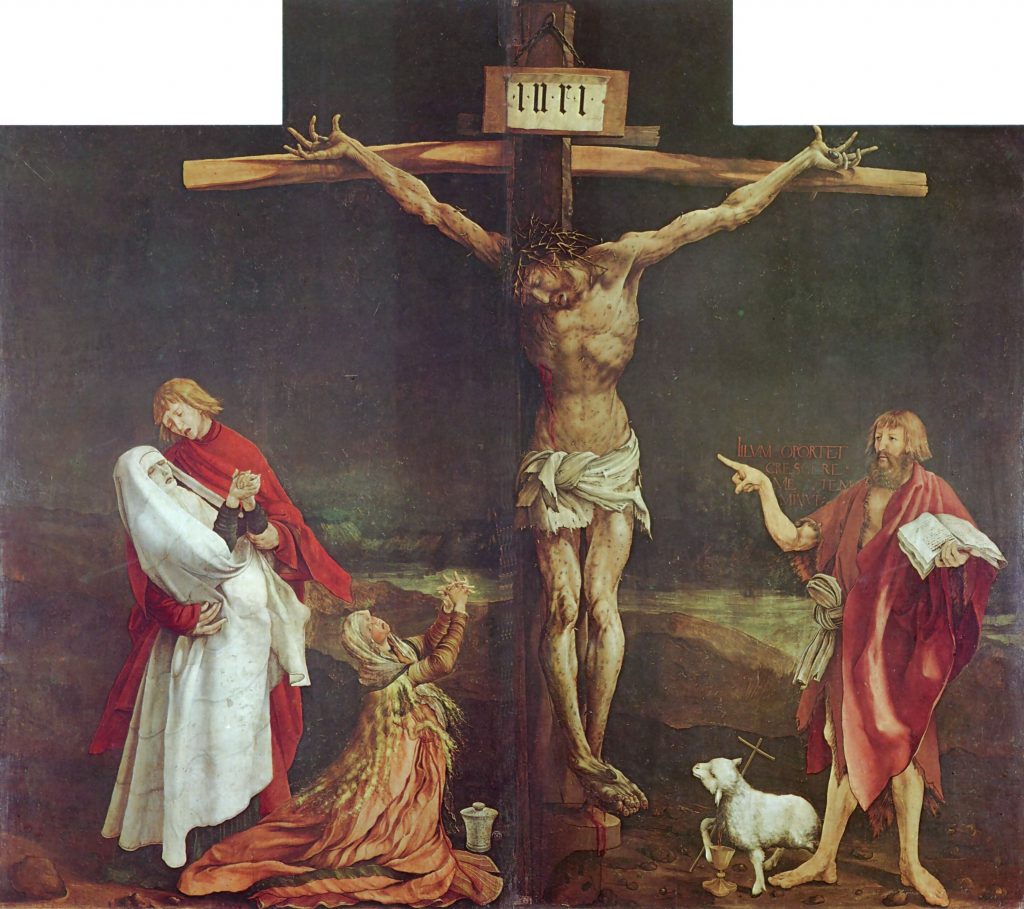
The agony of the crucifixion is detailed in the contorted hands and feet of Christ. . .
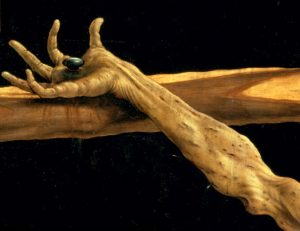
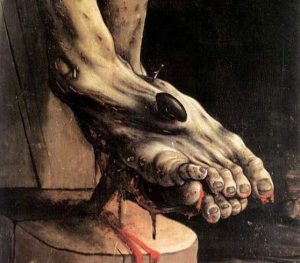
. . . as well as his lifeless face framed by the crown of thorns.
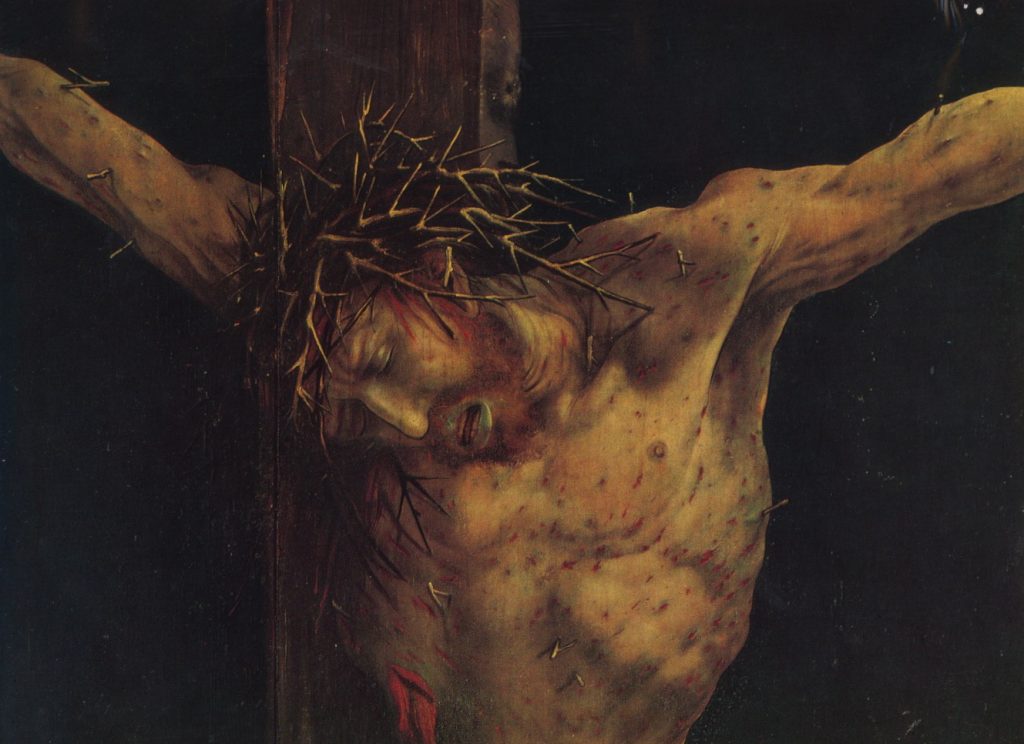
His skin does not glow, but is painted in shades of gray depicting necrosis. His body is covered with thorns and sores as metaphors for the curse of sin, as well as various skin diseases that afflicted humans of that age.
The depiction of death on the cross is agonizing, as it should be. Death is the curse of a sinful creation. Death is ugly and has a dreadful stench that takes our breath away. The only proper response to death is horror and lament. The grave receives the body which decomposes.
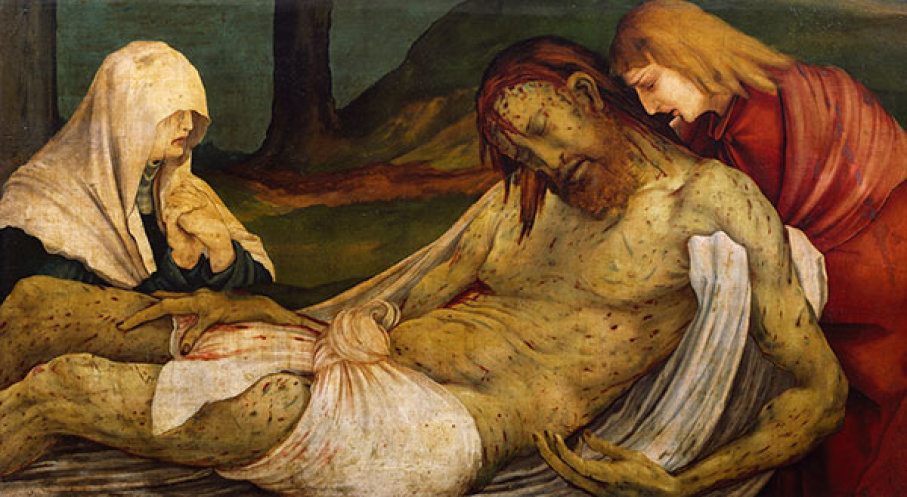
In Jewish tradition, the body was entombed and allowed to decompose for about a year. Then, family members would gather the bones for permanent disposal in a bone-box which would be placed in the family tomb. The soul of the dead would descend into Sheol – the abode of the dead.
The Glory
But, in Christ death is defeated. There will be no need for a bone-box because Jesus will not be abandoned in Hades, nor will his flesh suffer decomposition (Acts 2:27). The Apostle Peter declared,
But God raised Him up again, putting an end to the agony of death, since it was impossible for Him to be held in its power.
Peter knew that the agony of the Cross was the birth pangs of New Creation. The word “agony” is typically used to speak of birth pangs. The agony of the Cross gives way to the glory of the resurrection. The darkness of the grave is overcome by the Light of the world. The laments of death are hushed by joyful songs of new life as despair gives way to hope. In Adam, the glory of God fell from humanity; in the resurrected Christ the glory of God is restored to humanity. The Isenheim Altarpiece depicts the radiance and glory of the resurrected Christ.
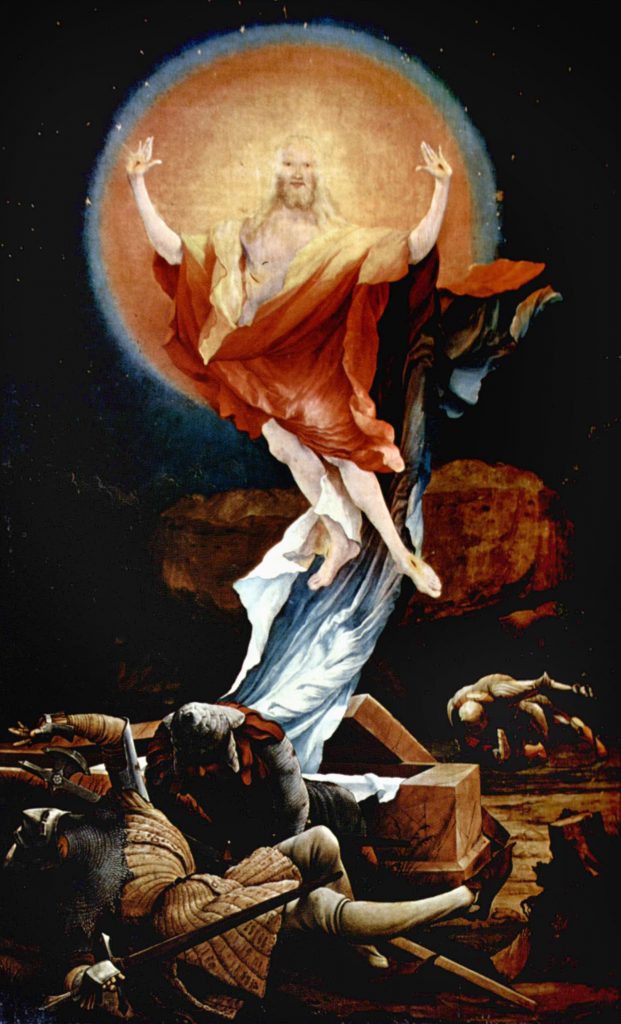
The necrotic skin is healed, the sores and thorns are gone, and Christ radiates the glory of God. The soldiers of human empire faint in presence of the divine-human Christ. Only the wounds of the crucifixion remain. Why? The wounds signify the agony and the glory of God’s redemptive love. The glorified Christ declared,
Do not be afraid; I am the first and the last, and the living One; and I was dead, and behold, I am alive forevermore, and I have the keys of death and of Hades.
